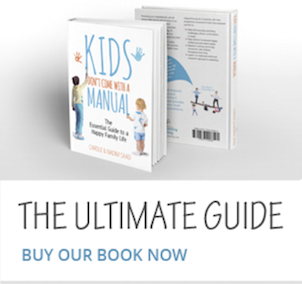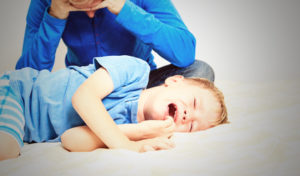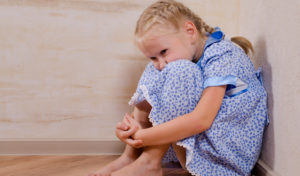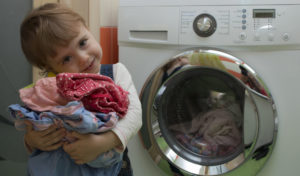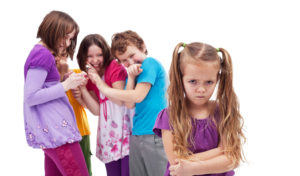The summer holidays are drawing to a close, and for some children the thought of going back to school can be a source of worry and anxiety. Holidays are typically a time of fun and relaxation, where we are free from the deadlines, demands and expectations of everyday ‘normal’ life. So it can be difficult for some children to adjust – as well as for us parents! – as daily routines are reintroduced and the focus shifts from ‘holiday mode’ back to school life, particularly if they are about to experience a change of school.
At this time of year, you may notice that your child suddenly becomes more prone to tantrums (if they are younger) or starts to become clingy and anxious when you are not around. They may appear to be ‘acting up’ by being more irritable and disagreeable than usual, and this can be very frustrating for parents. However, what we must remember is that such forms of ‘mis’behaviour’ are often a sign that a child is struggling to deal with a deeper emotional conflict.
As adults, we know only-too-well how difficult it can be to go back to work after a holiday. The thought of going back to school is made even more difficult for children as they do not yet have the emotional maturity to cope with these changes. To have to suddenly return to structure and routine after weeks of fun and relaxation can be a very difficult transition indeed. As well as having to readjust to the structure and routine of everyday life, your child may be worried about changing class or having a new teacher, or they may be concerned about having to make new friends. It may be that they are worried about being separated from you and/or other family members, having gotten so used to spending so much time together over the summer holidays.
While we can’t necessarily prevent children from experiencing back to school anxiety, we can make the transition easier by using a few ‘tools’ that will prepare them emotionally and help them to cope with the challenges that lie ahead.
Creating Routines
The best way to circumvent many of the routine and structure issues is by planning ahead and establishing a schedule with our child(ren). This can take the form of an easy-to-reach and read chart for the child to refer to. Simply inviting our child to work with us on drawing up (or take pictures of) a workable routine for the weeks ahead, agreeing that once fixed, the schedule becomes ‘the boss’ rather than us.
Empathy and Validation
The most important thing we can do to help their child cope with back to school anxiety is to encourage them to open up and express any worries or fears that they may have. Children will open up to us if they feel that they are being heard, so whatever the source of their anxiety may be, it’s important that we validate their feelings – first by empathising with them and then by encouraging them to express their emotions and talk about what’s bothering them. So we shouldn’t immediately reassure them if they have a worry. For example, if our child is worried about going to a new school, we should prevent ourselves – however tempting it is! – to say “Your new school is going to be amazing and you’re going to make lots of new friends!”. Instead, we should empathise with their feelings and use the Active Listening technique (see below).
Active Listening
Once we have validated our child’s feelings, we can then actively listen to them. To do this, we just need to repeat what they are telling us (word for word or in our own words), or try to name their feeling if they are sharing a story which has affected them. Once we have actively listened, the child’s anxiety will often be reduced. If they have voiced a concern, we you can ask them: ‘What are you going to do about it?’, or if it’s something that we can help with we can ask them: ‘What could you do about it?’.
Family Contribution
If a child is experiencing back to school anxiety, it’s not unusual for them to be more needy and clingy than usual. When a child is constantly demanding attention in this way, making them participate in what we’re doing, for example by giving them a household task or chore to perform can help. Giving a child responsibility makes them feel important and is a great way of building their confidence and self-esteem.
Mindful Breathing
This technique has proven to significantly reduce stress and strengthen attention and self-awareness. It is therefore a highly recommended practice to reduce anxiety in our children (and it can help us as well!). We can sit down with our child and teach them to breath from the tummy and to learn to focus on their breathing (ie. as soon as their mind starts wondering, they need to refocus on their breathing). We should try to do this for 3 minutes every day. We can also tell our child to take a moment to do this as soon as they feel anxiety (and even if we’re not around). We usually see some significant improvements after a couple of weeks.
Family Meetings
Family Meetings are a really effective way of re-establishing a child’s sense of security, and a chance for family members to unite in a spirit of togetherness and realign our expectations of one another. As going back to school approaches, we should schedule in some special family time to allow family members to express anything that may be bothering them and to discuss plans and expectations of the school year ahead. Planning ahead in this way makes the transition so much easier for children as they feel more prepared and will be better able to deal with the challenges that lie ahead.
NB: Remember to use the tools Limited Choices and Asking Questions all along to give your child more control over their lives – which will reduce any potential opposition.
You can find all of these tools and more in our book Kids Don’t Come With a Manual – The Essential Guide to a Happy Family Life.































